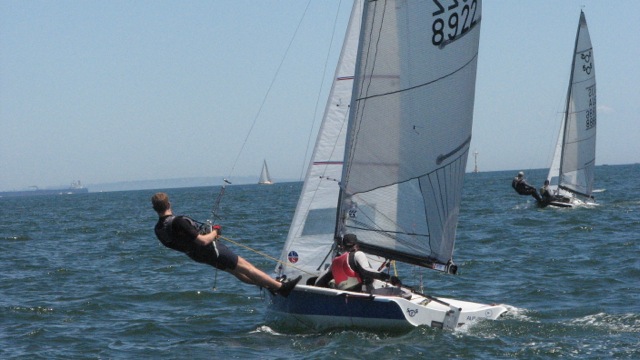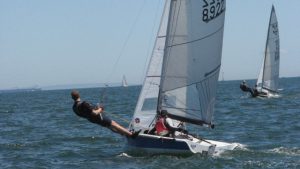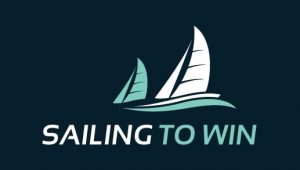
.
Read Your Helm – The feel in your tiller or wheel indicates what is right or wrong with your sails and the balance of the boat.
What the helmsman feels is dictated by sail trim, centreboard position, mast rake, heel and crew weight placement. With excessive helm, the steerer is working against the boats natural course.
By eliminating excessive helm you decrease rudder drag and thus increase boat speed.
Sail Trim
The jib pulls the bow down and the mainsail when pulled in moves the bow up towards the wind.
On a boat that is mainsail driven like a 505 or Etchells, you should focus more on the mainsail. It contributes the most to the helm and constant adjustment will affect the helm you experience.
The mainsail should not be cleated with the cleat placed so it’s hard to engage and easy to uncleat.
Have a mark on the mainsheet as a reference so you can repeat a setting when you tack or adjust for an increase or decrease in wind velocity.
The same goes for marks on your vang, fine-tune and traveller so that you can replicate settings when powering up and de-powering.
Heel and Balance – Read Your Helm
In a dinghy the rule is, always sail the boat flat. If you don’t, the rudder becomes a brake. An easy way to find if the boat is flat is where the helm goes from windward to leeward helm.
One exception, especially in lighter winds is where you might want to generate a little windward helm. A slight amount of heel will generate hydrodynamic lift off the blades.
When sailing heeled and you feel an increase in helm, flatten the boat to re-instate neutral helm and reduce drag.
Centreboard Position
Obviously, not all boats are the same, but if you pull the board up, this moves the centre of lateral resistance back, thus reducing helm.
Most classes have tuning guides that give you those settings. The centreboard is integral to the helm balance. Mark it so that you know exactly where to set it for a given wind range.
Don’t slavishly follow the tuning guides though, merely use them as a starting point, there is no substitute for two-boat testing to find out what works best for you.
Knowing where to have the board set in all conditions and then fine-tuning it from there is really important and in many one-designs, the centreboard is integral to helm balance as example, when sailing in waves, you might need a little more board-up to free up the helm to drive around the waves.

